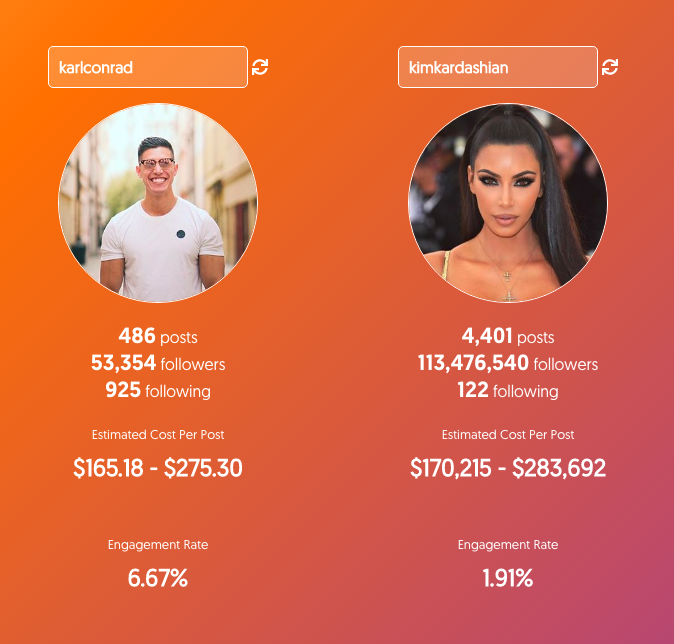Part
01
of one
Part
01
Marketing & Advertising: State of the Industry
Key Takeaways
- Short-form video content is an emerging trend that has quickly come to dominate the marketing and advertising industry, as the attention span of consumers continues to decrease. By 2025, mobile video ad spending in the United States is expected to reach $51.5 billion. It is projected that the vast majority of that ad spend would go to short-form video content.
- In 2021, influencer marketing continued to grow, with brands tapping both "big- and small-name stars." However, micro-influencers have taken center stage and are predicted to drive industry growth this year and in the near future.
- In the past, businesses leveraged print marketing successfully by producing and distributing printed promotional material such as brochures. However, in the digital world today, this practice is no more effective. Four years ago, in 2018, industry experts were already in agreement that static fabrics do not have "the features that the future of advertising will come to depend on." A Forbes report had put it thus: "They are heavy, inconvenient, unchangeable, wasteful and ultimately outdated."
Introduction
This research provides marketing/advertising trends reflecting the current or emerging practices, tactics, or strategies that have taken center stage or are expected to determine where the industry is headed. Also, contained in this report, are insights into the marketing/advertising practices that have become, or are gradually becoming, obsolete.
TRENDS
Short-Form Video Marketing
- Short-form video content is an emerging trend that has quickly come to dominate the marketing and advertising industry, as the attention span of consumers continues to decrease.
- In 2021, TikTok exploded, Reels witnessed wider adoption, and Google introduced YouTube Shorts. This is a very clear indication that today's culture-creating and digitally savvy consumers desire snappy and entertaining videos. In marketing and advertising campaigns today, and in the near future, such content is becoming "an increasingly core component of brands' social strategy."
- By 2025, mobile video ad spending in the United States is expected to reach $51.5 billion. It is projected that the vast majority of that ad spend would go to short-form video content.
- More than 25% of adults say they would "close out a video after only 10 seconds," while more than half say they would close it after only 20 seconds.
- To prevent viewers from clicking the “skip” button on YouTube, brands are launching ultra-short, but highly engaging, adverts. Hefty is an example of a brand that is leveraging this practice. It recently launched "a six-second “Party Hefty” ad series aimed at brand awareness."
Micro-Influencers
- In 2021, influencer marketing continued to grow, with brands tapping both "big- and small-name stars." However, micro-influencers have taken center stage and are predicted to drive industry growth this year and in the near future.
- Micro-influencers have become a top choice for brand collaboration. This is due to the fact that they have focused and small audiences that drum up strong returns on investment (ROI).
- Last year, micro-influencers accounted for "91% of engagement across all sponsored posts," according to Kantar. This trend is set to continue in 2022 and beyond. Currently, "more than 56% of marketers who invest in influencer marketing work with micro-influencers."
- Unlike celebrities who are hard to reach, micro-influencers are still perceived as “everyday” people. As a result, their audiences are "more likely to trust their opinions and recommendations."
- Notable examples of brands that are leveraging this practice include Google and Chrysler.
Employee Advocacy
- Consumers trust messages shared by people more than corporate messages shared via brands’ social media accounts. As a result, they expect brands to use more authentic messaging in their ads.
- In order to leverage this consumer preference, more and more brands are leveraging employee advocacy in various ways. By using employees as ambassadors, brands connect with their customers in more authentic ways.
- Employees are now being motivated to share brand-related content that interests them: for instance, content that is related to their expertise. These posts are often personalized.
- Findings from one study revealed, "that company branded messages had a 561% reach when shared by employees compared to branded channels." Another study conducted by Cisco found that "employee posts can generate 8X more engagement than when that same content is shared through a brand handle."
- Examples of brands that are leveraging employee advocacy include Electronic Arts, Dell, and Genesys.
OBSOLETE PRACTICES
Paper/Print Marketing
- In the past, businesses leveraged print marketing successfully by producing and distributing printed promotional material such as brochures. However, in the digital world today, this practice is no more effective.
- At the very best, this form of marketing can be used as an additional measure, not as the key plan. Today, any business whose promotion depends on paper marketing is likely to fail. The majority of today's consumers rarely read materials where they are located.
- In most cases, paper products that are used for marketing eventually end up in the trash, on the street, in bodies of water, or in parks. People are simply "not interested in reading pamphlets that they unwillingly received." Therefore, it can be counterproductive to leave such material in the mail or give them out randomly on the street.
- Marketers can only benefit from paper marketing by handing out materials to consumers "when they desire to see it or when they are already buying [the brand's] products or services."
- Four years ago, in 2018, industry experts were already in agreement that static fabrics do not have "the features that the future of advertising will come to depend on." A Forbes report had put it thus: "They are heavy, inconvenient, unchangeable, wasteful and ultimately outdated."
Mass Marketing
- Traditional methods of marketing aimed to serve consumers en masse. Brands did not have a targeted approach. Instead, they would market their products to anyone who crossed their path. Experts now describe this ‘spray and pray’ technique as inefficient and expensive.
- Over the years, consumers have evolved and developed a more sophisticated shopping behavior. As a result, the “one-size-fits-all” approach of mass marketing is gradually "being pushed out by differentiated marketing."
- A decade ago, mass marketing was the rave of the moment, as targeted and differentiated marketing was not in existence then. At the time, advertising abilities were a lot more limited. However, times have changed and digital marketing has replaced old advertising methods.
- In a world where consumer behavior and technology continue to evolve quickly, people have gotten used to generic ads. They seek more targeted campaigns that are unique to their shopping experiences. Such consumer desires cannot be achieved via traditional mass marketing methods.
Research Strategy
For this research on "Marketing & Advertising: State of the Industry," we have leveraged the most reputable sources of information available in the public domain, including Marketing Dive, HubSpot, Forbes, and Sprout Social.
To identify trends and insights, we leveraged industry expert opinions, market reports, and consumer surveys. The most frequently mentioned practices/strategies were chosen and presented, with supporting data and expert commentary.


:format(webp):no_upscale()/cdn.vox-cdn.com/uploads/chorus_asset/file/7394527/Screen%20Shot%202016-11-02%20at%2012.55.39%20PM.png)
